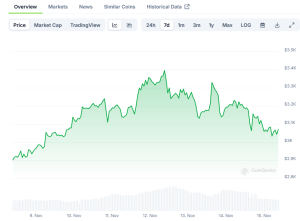Ethereum is poised to reassert itself and outperform other cryptocurrencies in 2024 according to analysts at JPMorgan
Keypoints
This upgrade will act as a stepping stone toward full Danksharding on Ethereum, a more efficient form of sharding. While originally Ethereum looked to shard by splitting the network into fragments, Danksharding uses temporary data blobs attached to blocks capable of holding more data without altering Ethereum’s block size or permanently storing data on-chain.
Crucially, these data blobs can enhance the efficiency of Layer 2 networks built on Ethereum like Arbitrum and Optimism. By providing additional temporary data capacity, Protodanksharding will enable Layer 2s to increase throughput and lower transaction fees without changing Ethereum itself. This boost to Layer 2 network activity is what will help drive Ethereum’s outperformance, per JPMorgan.
By contrast, Bitcoin in 2024 faces headwinds that could limit major gains. JPMorgan cautions that presumed 2024 tailwinds like ETF approvals and the upcoming halving are likely already accounted for in Bitcoin’s current price. After previous halvings slowed Bitcoin’s market price growth relative to production costs, a comparable deceleration after the 2024 halving would make sense. With Bitcoin’s price already trading around twice production costs, much halving-related upside seems eliminated.
Beyond technical upgrades, crypto as an asset class still confronts adoption challenges. Decentralized finance’s inability to make traction in mainstream banking and finance persists as a disappointment for JPMorgan.
Major traditional financial applications of blockchain technology continue to operate on private chains, not public ones. Meanwhile tokenization remains experimental thanks to lacking regulations, uncoordinated technologies, and hesitation around central bank digital currencies.














